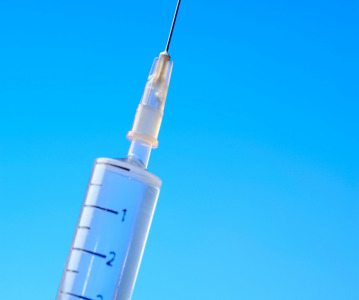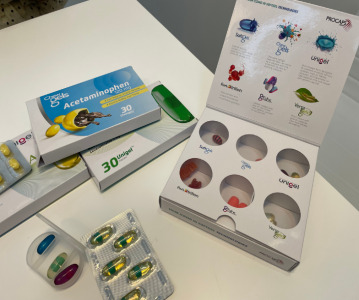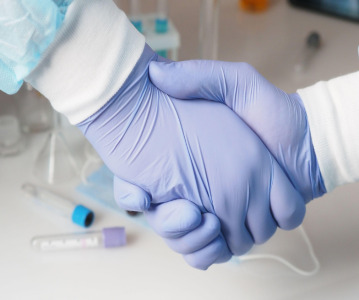CPHI India Report identifies two-tier manufacturing market and predicts increased acquisitions

CDSCO certification has improved international repute of India, but domestic companies call for urgent Government support to invest in API facilities.
CPHI releases the findings the 2017 India Pharma Market Report, which identified a two-tier manufacturing market and forecast increased acquisitions by Indian companies, along with a notable improvement in the international reputation of Indian made pharmaceuticals. But perhaps most dramatically, a large majority of domestic companies called for urgent Government support to invest in API sites.
The report, which consolidated opinions from 500 domestic and international companies, identified four main areas in which Indian pharma companies are investing – with 50% raising funds this year for ‘commercial scale and scale-up facilities’; around one third for ‘continuous processing’; and just over 20% each in both ‘biologics’ and ‘aseptic/sterile’. Over the next 3 years, however, the number of companies planning to invest in biomanufacturing facilities rises to one third. It’s notable that the more expensive facilities and capabilities needed for continuous processing and biomanufacturing are being added to India’s traditional base of commercial-scale finished-product facilities.
During the next 1-3 years, 36% of Indian pharma companies are planning acquisitions; 20% are looking at facilities in the US and Europe, with 7% exploring options in the rest of the world. Domestic acquisitions also point towards a scramble amongst many SMEs for greater size and scale, with some 25% also looking at facilities within India itself.
These findings are announced ahead of CPHI India (27-30 November 2017), which is forecast to reach a 40,000 attendees, with overseas interest in the country growing rapidly. The report also highlighted that the international reputation of the country on ‘data integrity’ has also improved massively; 96% agree that the CDSCO certification programmes and initiatives are helping to increase compliance. Even more impressive is the fact that 52% of international respondents believed the CDSCO is moving toward comparability with the regulatory standards of the EMA and FDA.
A major concern highlighted amongst domestic companies (86%) was an over reliance on Chinese ingredients within the finished formulations sector. In fact, the majority of domestic companies (81%) believe that the Indian government needs to ‘urgently invest in domestic API facilities and provide tax-breaks and incentives to secure the Indian generics industry’ and prevent losses in market share.
Chief amongst the growth drivers reported are strong domestic sales in the next 2-3 years, generic APIs exports, as well as finished formulation for developed markets. Finally, 41% of international respondents believed that more biologic alliances – similar to the Mylan-Bocon partnership – may develop between India and the West in the future, with 30% believing these will proliferate in the next 3-5 years.
One interesting perspective on the India finished dosage sector – well known as the world’s leading exporter – is the identification of a two-tier system, with business models targeting different types of foreign market. The first type is targeting predominately the Western pharma economies, consisting mainly of the United States and Europe. In this market, India is a prime provider of complex generics, branded drugs/OTC, and biosimilars due to its cost-efficient and high quality products. Larger pharma companies are now looking beyond these two Western markets and expanding into Japan, as generic use is forecast to expand rapidly – after many years of largely on-patent drugs – yielding greater profit opportunities. On the other hand, India’s smaller and medium sized pharma companies (type 2) have focused on developing countries as their export market; in particular, on high-volume, low-margin generic products. Consolidation amongst these providers is highly likely as they try and progress-up the value chain, and move into formulations with greater margins – companies also require a certain size and financial flexibility to invest in the newer types of products coming into the market.
Finally, the report argued the biosimilars and biologic sector is now the hotbed of national innovation, and will see well above-market growth in India. With more biologics coming off-patent in the near future, there is a growing opportunity for pharma companies to make increased profits via biosimilars with interchangeable standards.
Rutger Oudejans, Brand Director, Pharma - UBM EMEA, said: “CPHI India has seen dramatic changes in the last couple of years as increasingly all of world pharma is attending and domestic companies are investing in new types of manufacturing equipment and even biologics. It is an extremely dynamic market with standards and its global reputation catching-up with the on-the-ground realities. This year we anticipate an enormous 40,000 attendees and we expect the number of multinationals and new innovations emerging out of the country to accelerate. Frankly, we were taken aback by the overwhelming positivity of our report’s findings, with only supply chain ingredient concerns identified as a potential drag on growth.”
Related News
-
News CPHI Frankfurt: Interview with Marcelo Cruz, Vice President, Business Development & Marketing at Tjoapack
In this series of interviews, we caught up with some of the exhibitors at CPHI Frankfurt to discover what innovations are being brought to the pharmaceutical industry this year. Here we chat with Marcelo Cruz of Tjoapack to discuss how global events ar... -
News CPHI Frankfurt 2022: Innovator Interviews – Bioiberica
In this series of interviews, we speak to the companies on the CPHI Frankfurt show floor who are driving innovation in pharma for a better healthcare future. We caught up with Mónica Gómez Navarro (Marketing Manager Branded Ingredients), ... -
News CPHI Frankfurt 2022: Innovator Interview – Procaps Group
In this series of interviews, we speak to the companies on the CPHI Frankfurt show floor who are driving innovation in pharma for a better healthcare future. We interviewed Rosella Del Vecchio Herrera, Marketing Director at Procaps Group, to discover h... -
News From the floor - CPHI Frankfurt 2022
The live blog from the people on the ground at CPHI Frankfurt - covering all stand-out news, memorable moments, and keynote updates from the 2022 event. -
News How to Commercialise an Advanced Therapy: Connect to Frankfurt on-demand
In this Connect to Frankfurt session, Andrea Zobel, Senior Director, Personalized Supply Chain at World Courier (Berlin Germany), Melissa Lattanzi, VP Emerging Therapies at AmerisourceBergen (King of Prussia, USA), and Hans-Peter Scherzer, Customer Suc... -
News CDMO - Health is a Joint Project: Connect to Frankfurt on-demand
In this Connect to Frankfurt session, Emanuele Agnese, Business Development Manager and Pietro Allegrini, R&D Director at Indena, present the ways in which a reliable manufacturing partner in the pursuit of better health outcomes for patients and pharm... -
News Streamlined Development for Efficient Production of Bispecific Molecules: Connect to Frankfurt on-demand
In this Connect to Frankfurt session, Séverine Fagète, VP, Cell Line Development Services at Selexis (Geneva, Switzerland), and Brandon Brino (Durham, USA), Process Development Scientist and Group Leader at KBI Biopharma, present an overv... -
News MDR – How to collect post-market clinical follow-up data (PMCF): Connect to Frankfurt on-demand
In this Connect to Frankfurt session, Philipp Annecke, Junior Key Account Manager and Heinrich Martens, VP Regulatory Affairs of Fresenius Kabi (Bad Homburg, Germany) present guidances from the Medical Devices Regulation on clinical data evaluatio...
Position your company at the heart of the global Pharma industry with a CPHI Online membership
-
Your products and solutions visible to thousands of visitors within the largest Pharma marketplace
-
Generate high-quality, engaged leads for your business, all year round
-
Promote your business as the industry’s thought-leader by hosting your reports, brochures and videos within your profile
-
Your company’s profile boosted at all participating CPHI events
-
An easy-to-use platform with a detailed dashboard showing your leads and performance







.png)